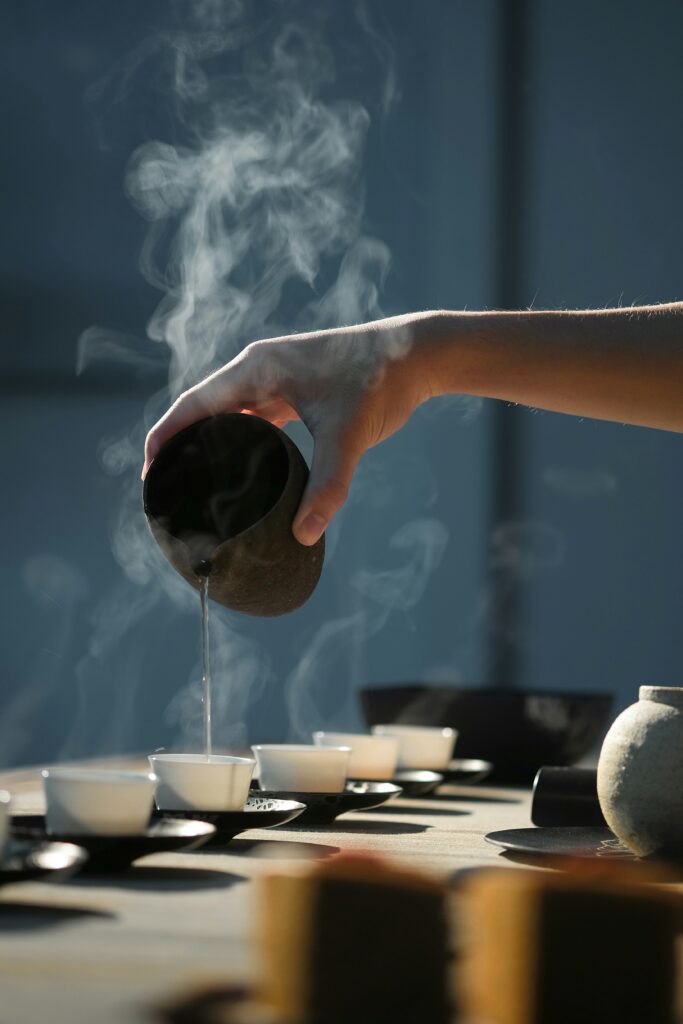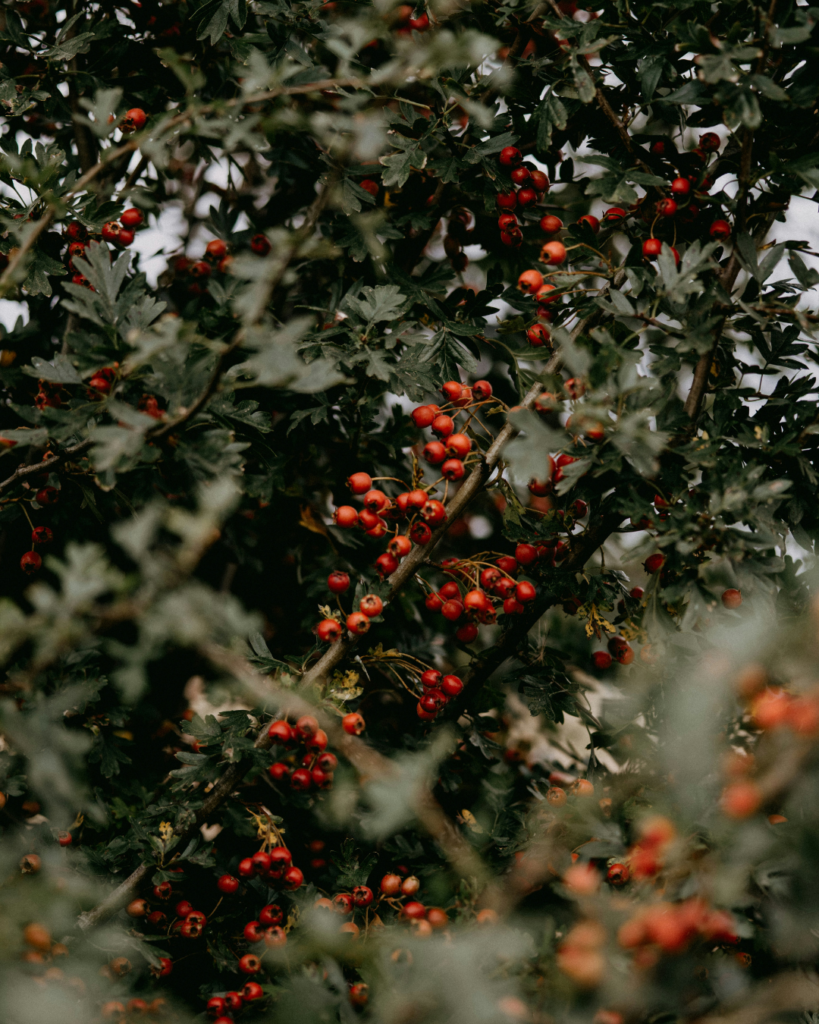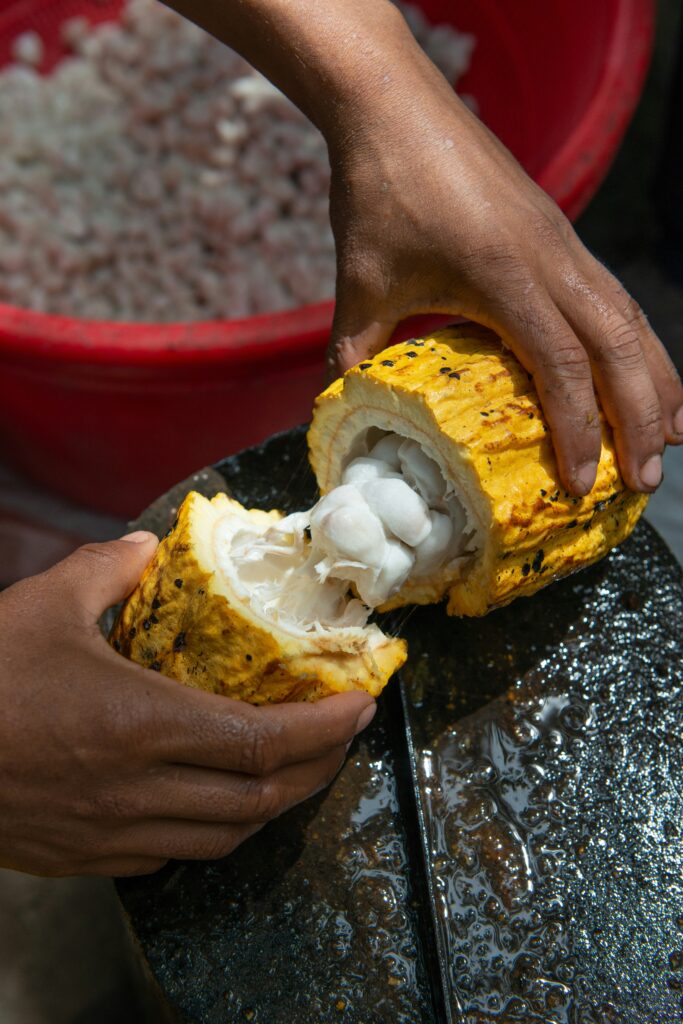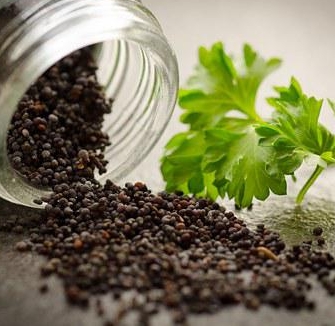
We emphasize this a lot in this space, but simply because it is true – Nature is our greatest teacher and so generously offers us wisdom by means of demonstration. We have a wealth of knowledge available just out our door, if we are willing to slow down and listen.
Whether we witness a patch of weeds restoring nutrients back to the soil beside a busy highway, the way the flowers dance together in a pot on our windowsill, or spend time in deep wonder pondering the intricate inner workings of a mycelial network that connects us all – nature teaches us that everything is interconnected, and our relationship is foundational to all things.
Nature thrives best in community, where all living things come together to nurture and uplift one another, where there is not hierarchy, but endless support. The most intact ecosystems operate from this principle, and we too are encouraged to participate in this way. The community of nature is not separate from humans, matter of factly, when we share in reciprocity, we can tend to the stewardship and contribute to the dynamics of healthy relationship with the land. As Robin Wall Kimmerer says, “knowing that you love the earth changes you, activates you to defend and protect and celebrate. But when you feel the earth loves you in return, that feeling transforms the relationship from a one-way street into a sacred bond.”

In our modern times, it can often feel like we are very much removed from this teaching. According to an April Ipsos poll, in the United States, Americans feel that their country is greatly divided, and that the division continues to increase. Matter of factly, a staggering 81% of respondents felt this way.
And yet, interestingly, seven out of every ten respondents indicated that most Americans want the same things out of life, indicating that they feel that we likely feel we have more things in common than we realize. There is no denying that in a world still reeling from isolation we felt navigating the pandemic, impacts of social media, and an impending election year can all contribute to it feeling like we are more divided than ever – but yet it is core to our very humanity to yearn for connection to others. Like nature, we too thrive best in a reciprocal community.
Through the plants, we can re-member, and we can find reconnection with ourselves and others.
Kava, Hawthorn, and Cacao as Teachers
As we have explored on this blog many times before, humans are intimately connected in relationship with plants, and have been since the dawn of time.
Our communities depended on them for food, all having a role to play in tending to the community gardens that fed us. Plants were called upon as medicine, working through community healers to bring wellness to those who were ill or suffering from disease. The plants carried messages and prayers to the heavens by way of sacred smoke or in gifts received as land offerings.

The plants also had a distinct and long-standing role in supporting a community in conflict resolution. Yes, even our ancestors before us didn’t always agree or get along, and disruptions in relationships would occur. And yet, not all elders were human – the plants also helped remind those who felt angry, betrayed, or even distrusting and vengeful of their neighbors, that hate is never the answer, and acting from a place of love and peace will always ensure the vitality of our community.
The three herbs we will explore have been long utilized for thousands of years by the people who share a deep relationship with them. They all three hold qualities of heart opening and expansion, help us to move from a place of love and compassion while holding firm boundaries for ourselves, and at their core help remind us of what it means to be connected to others.
Kava Kava
Kava is fastly gaining popularity in our modern culture due to it being such a supreme support for the nervous system. Additionally, it has shown profound impacts for people who are seeking support in resolving addictions to substances.
In addition to these incredible benefits, Kava has an ancient history for indigenous communities of the Pacific Islands. Not only was it used as medicine, but it became a symbol of community and unification and was integral to ceremonies seeking to create relationships amongst people. It was also incorporated into special community celebrations and intimate gatherings such as weddings, funerals, and initiations. However, most interestingly, Kava was a sacred ally for conflict resolution within the community.

Kava would be prepared to help feuding members of the community, or even family members or romantic partners, be able to communicate openly and with compassion. Kava works wonders on the nervous system, helping to calm anxiety and allow us to think more clearly without the clouding of judgment, anger, or resentment when approaching conversation and restoration. Even more incredibly, there would be situations in which “war kava” would be utilized when escalating tensions would occur between tribes. As stated by the company Kalm with Kava, “would be combatants [would] sit down drinking kava together and discuss their issues, often coming to the conclusion that fighting is unnecessary.”
If you have a situation with someone in your life where you feel like coming to resolution is difficult, consider preparing kava and drinking it together as you engage in the difficult conversation with them. Kava can also be supportive in helping restore relationships after a period of contention, such as a heated argument with a romantic partner.
Hawthorn
This magical tree has long been deeply steeped in folklore and mystery in Europe, particularly for the peoples of Ireland, Scotland, and the British Isles. Hawthorn has a history of relationship with the land, acting as a grandmother and guardian for all that is ancient, and additionally is known for being a sacred tree of the Faeirie Folk. Even in modern times, this tree receives respect and adoration from people who understand the tree’s remarkable ability to hold the line of the liminal spaces – we find ourselves still in awe by all that this tree is!
The message of the hawthorn is often “both/and.” The tree has an affinity for the in-between, often blooming on Beltaine (or May Day) and producing fruit on Samhain, indicating its ability to work with the liminal. Both the flowers and the berries of this tree are incredible heart medicine, helping us to move from the deepest recesses of self, reconnect with the land, and find inspiration from the great web that connects us all. And yet, this is a tree that has profound thorns amongst its branches. This is an indication that while it is important to be heart-centered and expansive, it is also important to hold firm boundaries. We can express love freely and openly, but also only accept being treated with kindness and respect in return versus allowing others to trample upon us.

![]()
Hawthorn in mythology and folk practice has long been seen as symbol of hope and unity. Hawthorn adorned ancient Greek weddings and in Ireland was used in handfasting ceremonies. It was also deeply beloved and sacred to the Druids, who worked with Hawthorn as a sort of portal to commune more deeply with the spirits of the land.
This tree has a beautiful grandmother-like energy as well that can hold us when we are experiencing deep grief, especially in the instance of wanting to restore love to ourselves or restoration in relationship with others. Work with Hawthorn when seeking to tend to the linings of the heart, in mending that which has been broken.
Cacao
Probably the most well-known plant of our modern times, particularly around community ceremony and ritual, is cacao. This plant has seen an incredible uprise in popularity, especially in a culture that is feeling so disconnected, isolated, and carrying heavy hearts.
Cacao is another plant with an ancient lineage and relationship with people, having records of use in Central America for about 4,000 years. This plant was used predominantly in a community setting, where members of the community would gather together in circle to set intentions, seek spiritual counsel and guidance, and bring about community unity. It was a deeply sacred plant stewarded by ancient civilizations like the Mayans and the Aztecs for the purposes of promoting positivity and manifesting dreams within the community.

It is important to understand that cacao is the raw form of what we know as chocolate – this is the form of the plant before sugar is added and it is processed. In this form it is bitter, but this is part of its incredible medicine – helping to address digestive issues and also to stimulate energy flow within the body. Cacao is also an incredible heart tonic medicine and an adaptogen, helping us to overcome stress as a result of our environment. It also has a deep affinity for the heart space, particularly for men who have had to hold in emotions and have not been able to express themselves as a result of the expectations of our modern culture. It helps us to release that which is no longer serving us and to come more in relationship to our heart center.
It is highly encouraged to work with cacao in a ceremonial setting, though be sure to do your research! Ensure that the circle you choose to participate in understands and acknowledges the long-standing relationship of cacao to the indigenous communities who revered it, and ask that they source their cacao from sources where it is respectfully and sustainably harvested. As with anything, when a plant increases in popularity, we must exercise discernment to ensure that we are contributing to preserving the sacredness of the plant and not participating in extractive practices. However, working with cacao in ceremony and in community can be a beautiful way to build relationship to the plant and help find attunement with your own heart space.
Dear readers, while we are amidst troubled waters these days, may we always remember that in community is where we belong. When we move from our sacred heart space, may we know that we come from the place of sacred compassion. May we seek to start and end with love, and may we know in our very being that there is more that connects us than divides us. We wish you the most beautiful summer solstice ahead, and thank you for being part of our community.
Resources:
- Alexander, Kelly. “Everything You Need to Know About Cacao Ceremonies.” Escape Haven. 8 April 2022. Retrieved from: https://escapehaven.com/2022/04/cacao-ceremonies/
- Dharma Kava Lounge. “Historical Impact of Kava on Sociopolitical Structures.” 23 August 2023. Retrieved from: https://www.dharmakavalounge.com/post/historical-impact-of-kava-on-sociopolitical-structures
- Ecofriendly Homestead. “From Folktales to Forests: The Hawthorn Tree’s Role in Myth, Culture, and Ecological Balance.” 26 February 2024. Retrieved from: https://www.ecofriendlyhomestead.com/sustainable-garden/learn/from-folklore-to-forests-the-hawthorn-trees-role-in-myth-culture-and-ecological-balance
- Ipsos. “Americans view country as deeply divided, but believe most have much in common.” Ipsos.com. 29 April 2024. Retrieved from: https://www.ipsos.com/en-us/with-honor-ipsos
- Kalm with Kava. “The Journey of Kava: From Ceremonies in the South Pacific to Social Relaxation in the US.” 3 November 2015. Retrieved from: https://kalmwithkava.com/the-journey-of-kava-from-ceremonies-in-the-south-pacific-to-anti-anxiety-in-the-us/
- Vera Mexicana. “A Brief History of Cacao.” 2024. Retrieved from: https://www.veramexicana.com/article/a-brief-history-of-cacao/
Browse by category
- Aromatherapy
- Astrology & Magic
- Ayurdeva
- Botany Foraging & Gardening
- Chakras
- Digestion
- Earth Connection
- Energetics
- Flower & Gem Essences
- Folk Traditions
- Herbalism & Holistic Health
- Immune Support
- Materia Medica
- Mushrooms
- Nutrition
- Seasonal Living: Autumn
- Seasonal Living: Moon
- Seasonal Living: Spring
- Seasonal Living: Summer
- Seasonal Living: Winter
- Skin & Body Care

Don’t Miss a Thing!
Enter your email below to be the first to know about sales, new products and tips for taking care of your pieces.

